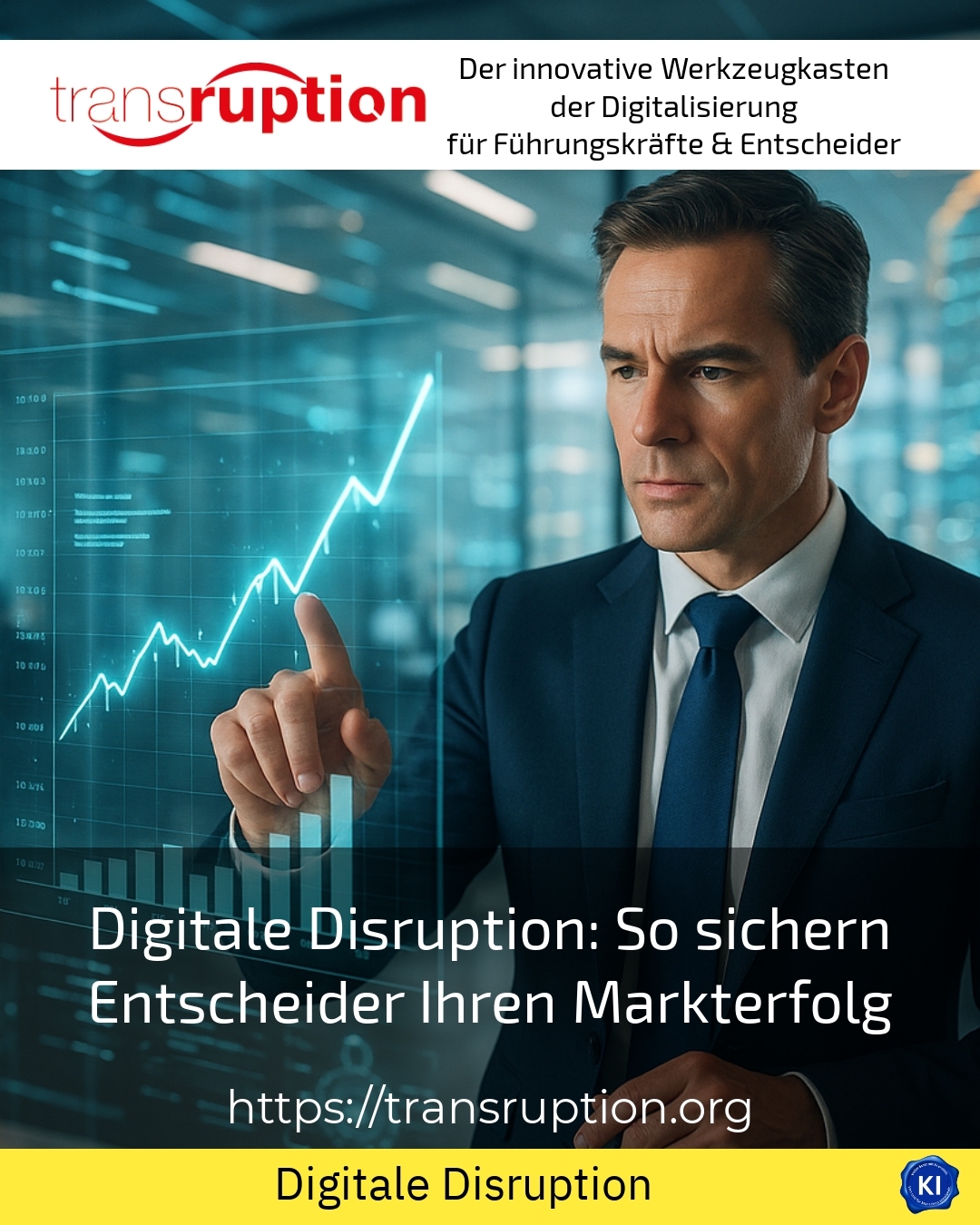Digital disruption is a key challenge for decision-makers in order to secure long-term market success. It is fundamentally transforming traditional business models and requires a proactive and strategic approach. Companies should understand the opportunities and risks of digital disruption in order to be able to react flexibly and innovatively to the new market conditions.
The importance of digital disruption for modern companies
Digital disruption describes the radical change of existing markets through digital innovations. This can mean that companies such as Airbnb, Uber or Netflix challenge traditional industries with new digital business models and in some cases displace them. These examples show how quickly and comprehensively entire industries can change[1][3]. Decision-makers are therefore increasingly confronted with the need to scrutinise and adapt existing business models.
For example, since the introduction of Uber, the taxi industry has been heavily impacted by the digital delivery model. At the same time, streaming services such as Netflix have challenged television and video stores. The retail sector is also undergoing significant change with online retailers such as Amazon, as customers are placing more and more value on convenience and availability[1][2].
How decision-makers can actively shape digital disruption
A key competence for managers is not only to observe digital disruption, but to actively support it. Systematic observation of market and technology trends helps to recognise disruptive potential at an early stage. Technologies such as big data, machine learning and the Internet of Things help companies to better understand new customer expectations and develop innovative products[3][5].
In concrete terms, this can be seen in various sectors: In the automotive sector, Tesla is investing heavily in electric cars and autonomous driving functions that are permanently changing the market. The music industry has been fundamentally restructured by streaming services such as Spotify, while communication platforms such as Slack are supplementing or replacing traditional email communication[3].
Decision-makers should focus on agile methods when implementing new strategies and prepare the entire organisation for change. The use of digital tools can make internal processes more efficient, which can create a competitive advantage. At the same time, it is important to empower employees to use new technologies and to make the corporate culture more open to innovation.
BEST PRACTICE at the customer (name hidden due to NDA contract)
BEST PRACTICE at the customer (name hidden due to NDA contract) This retail customer relied early on on a combination of an online shop and bricks-and-mortar retail, supported by data-based customer analyses. This enabled them to customise their offerings precisely to customer expectations and mitigate the consequences of digital disruption. New digital services such as Click & Collect helped customers to remain relevant in a highly competitive market environment.
Companies in the travel industry are behaving in a similar way, specifically integrating digital platforms such as Booking.com or Expedia into their sales strategy in order to hold their own against traditional travel agencies. In the media industry, companies are actively involved in producing their own digital content, as Netflix is doing, in order to not only remain content providers, but to become market participants themselves with a new business segment[1][2][5].
Important instruments for supporting digital disruption
In addition to technology, organisational aspects also play a major role. Decision-makers can use tools such as digital readiness checks to assess the digital maturity of their company and identify specific areas for action[4]. Integrating customer feedback via digital channels is also crucial.
Innovation management is also key. Companies should promote disruptive ideas, for example through collaborations with start-ups or internal innovation programmes. This allows new approaches to be trialled more quickly and scaled up if necessary. In this context, transruption coaching provides targeted and practical support by guiding decision-makers through digital projects and providing impetus for change.
Practical example from the automotive industry
BEST PRACTICE at the customer (name hidden due to NDA contract) As part of digital disruption, the client from the automotive industry is increasingly focussing on electromobility and digital platforms for connected vehicles. The change process was supported with targeted coaching and agile methods. This led to a faster market launch of new models and an improved customer experience.
Digital disruption as an opportunity for sustainable market success
Digital disruption can become a risk if changes are ignored. At the same time, it offers the opportunity to tap into new growth areas and stand out from the competition. Decision-makers who see digitalisation as a strategic task and actively shape it create robust business models for the future.
For example, companies from the communications industry report improved work processes thanks to digital collaboration tools that increase employee satisfaction and productivity. Retailers are closing the gap to online retail thanks to digital services, and companies from the service sector are expanding their portfolio with data-based offerings[3][7].
My analysis
Digital disruption is fundamentally changing markets and forcing decision-makers to take active action. Those who not only accept digital innovations, but also strategically shape them and support them with suitable methods, can ensure sustainable market success. Examples from various industries show that recognising and exploiting digital opportunities at an early stage is crucial. At the same time, support from experienced partners, such as transruptions coaching, is often valuable in order to competently accompany projects and provide impetus.
Further links from the text above:
Digital disruption - IT Process
Digital disruption - OMR Glossary
Digital disruption and megatrends - Maximal.digital
Digital disruption: How to make your company crisis-proof
For more information and if you have any questions, please contact Contact us or read more blog posts on the topic TRANSRUPTION here.
















